On December 13…
“I look out the window sometimes to seek the color of the shadows and the different greens in the trees, but when I get ready to paint I just close my eyes and imagine a scene.”
~Grandma Moses
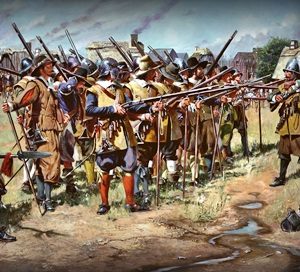
1636 – The military organization we know today as the National Guard came into existence with a direct declaration on this date, when the Massachusetts General Court in Salem established that all able-bodied men between the ages of 16 and 60 were required to join the militia.
The General Court of the Massachusetts Bay Colony ordered that the Colony’s scattered militia companies be organized into North, South and East Regiments.
The goal was increasing accountability to the colonial government and responsiveness during conflicts with indigenous Pequot Indians.
Under this act, the designated males were obligated to possess arms and to take part in the defense of their communities by serving in nightly guard details and participating in weekly drills.

1769 – Dartmouth College was founded by the Reverend Eleazar Wheelock, with a royal charter from King George III, on land donated by Royal governor John Wentworth.
Although founded as a school to educate Native Americans in Christian theology and the English way of life, Dartmouth primarily trained Congregationalist ministers throughout its early history before it gradually secularized, emerging at the turn of the 20th century from relative obscurity into national prominence as a private Ivy League research university.
Idle Thought: With a record-setting 19 Ivy League football championships, the “Big Green” is also prominent on the gridiron, too.

1862 – Union Major General Ambrose Burnside’s plan to move against the Confederate capital at Richmond, VA ended in a massive failure in Fredericksburg.
Background: Burnside’s attack required crossing the Rappahannock River in Fredericksburg. Burnside planned to cross the river at that point and then continue south. Due to poor execution of orders, however, a pontoon bridge was not in place for several days.
The delay allowed Confederate General Robert E. Lee to move his troops into place along Marye’s Heights high above Fredericksburg. The Confederates were secure in a sunken road protected by a stone wall, looking down on the open slopes that stretched from the edge of Fredericksburg.
Union soldiers had to leave the city, descend into a valley bisected by a water-filled canal ditch, and ascend an open slope of 400 yards to reach the base of the heights.
So strong was the Confederate position that one Rebel officer claimed “a chicken could not live on that field when we open on it.”
Burnside decided to attack anyway. Not once or twice but fourteen separate attacks up that slope as he watched his men get slaughtered in one of the most senseless charges in history.
The field was a killing ground for the attacking Yankees. No Union soldiers reached the wall at the top of Marye’s Heights, and few even came within 50 yards of it.
Burnside considered continuing the attack on December 14, but his subordinates urged him to stop. On December 15, a truce was called for the Union to collect their dead and wounded soldiers. Burnside retreated northward under the cover of darkness and rain.
The one-sided nature of the battle was reflected in the casualty figures. The Yankees suffered around 12,650 killed and wounded, while Lee lost only about 4,200 men.
General Joseph Hooker replaced Burnside as commander of the Army of the Potomac in January 1863.
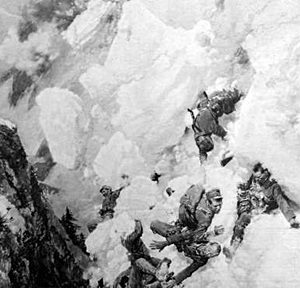
1916 – A powerful avalanche killed hundreds of Austrian soldiers in a barracks near Italy’s Mount Marmolada.
Heavy snowfall in the Alps had created conditions ripe for avalanches and Austrian troops stationed in a barracks near the Gran Poz summit of Mount Marmolada were in particular danger. Although the camp was well-placed to protect it from Italian attack, it was situated directly under a mountain of unstable snow.
Approximately 200,000 tons of snow, rock and ice plunged down the mountain directly onto the barracks. 200 troops were pulled to safety, but 300 others died.
As the heavy snow and high winds continued over the next week, incidents like the one at Marmolada happened with disturbing frequency. Entire regiments were lost in an instant. The bodies of some victims weren’t found until spring.
The best estimate is that somewhere between 9,000 and 10,000 soldiers died by the end of December 1916 because of the avalanches.

1943 – The Massacre of Kalavryta: Five days after the German 117th Jäger Division had destroyed the monastery of Mega Spilaio in Greece, Operation Kalavryta was mounted.
Its sole objective was the killing of the male population of the town of Kalavryta.
Background: The destruction of the monastery and Operation Kalavryta were part of the reprisals for the murder of 78 German soldiers, who had been taken prisoner by Greek Resistance guerrillas.
In the early morning of December 13, German troops ordered all male residents of Kalavryta, aged 14 years and up, to gather in a field just outside the village.
1,300 women, girls, and young boys below 14 were locked in a school which was then set on fire while the men were looking on from a hill outside the village. Fortunately for the women, an Austrian soldier unlocked the door of the building and the women and girls managed to escape.
The Germans shot the soldier who had set them free.
Then 696 boys and men were machine-gunned. Only 13 survived; saved because they were hidden under the bodies of the dead.
The following day the Nazi troops burned down the Agia Lavra monastery, a landmark of the Greek War of Independence.
German commanders, including Major Hans Ebersberger who carried out the destruction of Kalavryta, who carried out the destruction of Kalavryta, and Corporal Hauptmann Dohnert who led the firing squad, were never brought to justice for their crimes.
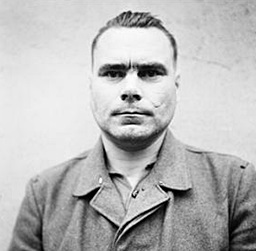
1945 – Josef Kramer , the “Beast of Belsen”, was hanged on the gallows in Hamelin prison in Germany.
He was the Commandant of Auschwitz-Birkenau (from May 1944 to November 1944) and of the Bergen-Belsen concentration camp (December 1944 to its liberation in April 1945), and was directly responsible for the deaths of thousands of people.
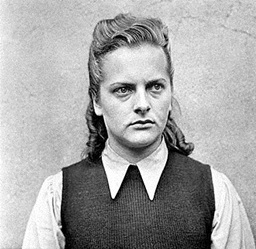
1945 – Irma Ida Ilse Grese, an SS guard at the Nazi concentration camps of Ravensbrück and Auschwitz, and warden of the women’s section of Bergen-Belsen, was hanged on the gallows in Hamelin prison in Germany.
Executed at 22 years of age, Grese – the “Hyena of Auschwitz” – was the youngest woman to die judicially under British law in the 20th century.

1957 – Peyton Place premiered in Camden, Maine.
Loosely based on the novel of the same name – but sanitized due to the Motion Picture Production Code (Hays Code) – the film received nine Oscar nominations (but no wins), including Best Picture, Best Actress (Lana Turner), Best Supporting Actress (Hope Lange and Diane Varsi) and Best Supporting Actor (Arthur Kennedy and Russ Tamblyn).
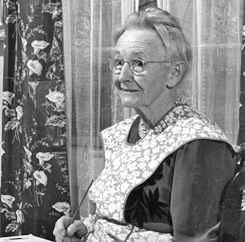
1961 – Anna Mary Robertson Moses, better known as Grandma Moses, died of natural causes at the age of 101.
She began painting in earnest at the age of 76 and created over 1,500 canvasses in less than three decades. She initially charged $3 to $5 for a painting, depending upon its size, but as her fame increased her works were sold for $8,000 to $10,000.
One of her most revered paintings, Sugaring Off, was sold for $1.2 million in 2006.

1977 – Air Indiana Flight 216 crashed near Evansville Regional Airport, killing 29, including the University of Evansville basketball team, support staff, and boosters of the team.
The crash was blamed on the pilot’s failure to remove locks on the right aileron and the rudder before takeoff, as well as an overloaded baggage compartment.
Two weeks after the crash, David Furr, the only member of the basketball team who was not on the flight (because of an ankle injury) was killed after being hit by a drunk driver.

1989 – Driving Miss Daisy, starring Morgan Freeman, Jessica Tandy, and Dan Aykroyd, premiered.
The film was a critical and commercial success upon its release and at the 62nd Academy Awards, it received nine nominations, and won four, including Best Picture and Best Actress (for Tandy).
The film was made at a cost of $7.5 million and grossed $146 million.

2000 – Vice President Al Gore reluctantly conceded defeat to Texas Governor George W. Bush in his bid for the presidency, following weeks of legal battles over the recounting of votes in Florida.
In a televised speech, Gore said that while he was deeply disappointed and sharply disagreed with the Supreme Court verdict that ended his campaign, “partisan rancor must now be put aside. For the sake of our unity as a people and the strength of our democracy, I offer my concession.”
In his acceptance speech, Bush said, “Now it is time to find common ground and build consensus to make America a beacon of opportunity in the 21st century. I’m optimistic this can happen. Our future demands it, and our history proves it.”
Gore had won the national popular vote by more than 500,000 votes, but narrowly lost Florida, giving the Electoral College to Bush 271 to 266.

2003 – After spending nine months on the run, former Iraqi dictator Saddam Hussein was captured hiding in a six-to-eight-foot deep hole, nine miles outside his hometown of Tikrit.
His downfall began with an ill-advised invasion of Kuwait in 1990. A U.S.-led coalition invaded Iraq in 1991, forcing the dictator’s army to leave its smaller neighbor, but failed to remove Saddam from power.
Throughout the 1990s, Saddam faced both U.N. economic sanctions and air strikes aimed at crippling his ability to produce chemical, biological, and nuclear weapons.
With Iraq continuing to face allegations of illegal oil sales and weapons-building, the United States again invaded the country in March 2003, this time with the expressed purpose of ousting Saddam and his regime.
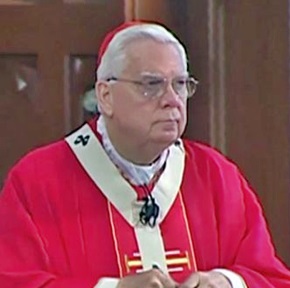
2002 – Cardinal Bernard Law resigned as Boston archbishop because of the priest sex abuse scandal.
Church documents showed he had extensive knowledge of sexual abuse committed by dozens of Catholic priests within his archdiocese and had failed to remove them from the ministry.
One priest alone was alleged to have raped or molested 130 children over decades, while Law and other local officials moved him among churches rather than going to the authorities.

2016 – Actor Alan Thicke, best known for playing Dr. Jason Seaver on the 1980s sitcom Growing Pains, died after suffering a heart attack. He was 69.
Long before his success on Growing Pains Thicke was hired by producer Norman to produce and head the writing staff of Fernwood 2 Night, a tongue-in-cheek talk show starring Martin Mull and Fred Willard.
Thicke had a successful career as a TV theme song composer, often collaborating with his then-wife Gloria Loring on the themes to the popular sitcoms Diff’rent Strokes and The Facts of Life. He also wrote a number of TV game show themes, including the original theme to Wheel of Fortune.
His son, Robin, is a highly successful singer-songwriter and record producer.
Compiled by Ray Lemire ©2019 RayLemire.com / Streamingoldies.com. All Rights Reserved.